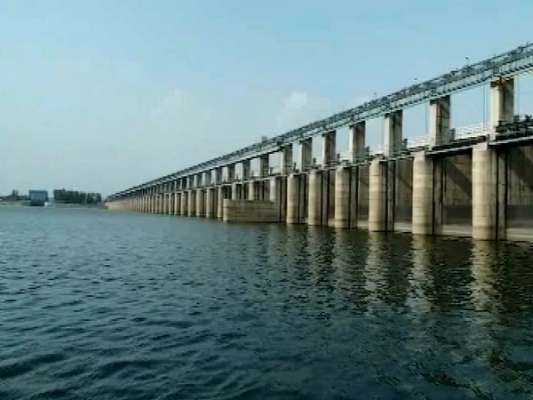New Delhi: The water quality of five major rivers in India, including the Ganga, deteriorated during the coronavirus-induced lockdown. The water quality deteriorations happened due to several factors. Among them was release of sewage and no fresh water discharge from the upstream. This information was given by the Central Pollution Control Board (CPCB) here Wednesday.
The CPCB also said four rivers – Baitarini and Mahanadi (in Odisha), Narmada and Pennar showed 100 per cent compliance with the Primary Water Quality Criteria for Outdoor Bathing during the pre-lockdown and lockdown period.
The water quality of Ganga, Beas, Chambal, Sutlej and Swarnarekha did not comply with the primary water quality criteria for outdoor bathing. This was stated by CPCB said in a report released on the occasion of its 46th Founders’ Day.
The report has been titled ‘Assessment of Impact of Lockdown on Water Quality of Major Rivers’. It said the quality of water in seven of the 19 rivers monitored by State Pollution Control Boards (SPCBs) improved during the lockdown period.
The CPCB said it had asked the SPCBs to assess the water quality of Ganga, Yamuna, Godavari, Krishna, Narmada, Beas, Brahmaputra, Baitarani, Brahmani, Cauvery, Chambal, Ghaggar, Mahanadi, Mahi, Pennar, Sabarmati, Sutlej, Swarnarekha and Tapi. Twenty SPCBs participated in the assessment.
Water samples collected from the 19 rivers were analysed for parameters like pH, Dissolved Oxygen (DO), Biochemical Oxygen Demand (BOD), Fecal Coliform (FC). The results were then compared with the ‘Primary Water Quality Criteria for Outdoor Bathing’ notified under the Environment (Protection) Rules, 1986.
“Water quality has not improved during the lockdown period in case of five rivers which are Beas (reduced from 100 to 95.45 per cent), Chambal (reduced compliance to the criteria limits from 75 to 46.15 per cent), Ganga (64.6 per cent to 46.2 per cent), Sutlej (reduction in compliance from 87.1 to 78.3 per cent) and Swarnarekha (80 to 53.33 per cent),” the report said.
This may be attributed to discharge of untreated or partially treated sewage, high pollutant concentrations due to negligible dry season flow and no fresh water discharges from the upstream, it said.
According to the report, river water samples from 387 monitoring locations were collected during the pre-lockdown period and 77.26 per cent of them complied with the primary water quality criteria for outdoor bathing.
During lockdown, 365 samples were collected and 75.89 per cent of them complied with the criteria, ‘which implies that there is no significant improvement in water quality of major rivers monitored in the country, during the lockdown period’.
Improvement was seen in the water quality of Brahmani, Brahmaputra, Cauvery, Godavari, Krishna, Tapi and Yamuna.
Brahmani’s compliance with the bathing criteria increased from 85 to 100 per cent), Brahmaputra’s from 87.5 to 100 per cent, Cauvery from 90.5 to 96.97, Godavari from 65.8 to 78.4 per cent, Krishna from 84.6 to 94.4 per cent, Tapi from 77.8 to 87.5 per cent and Yamuna from 42.8 to 66.67 per cent, the report stated.
